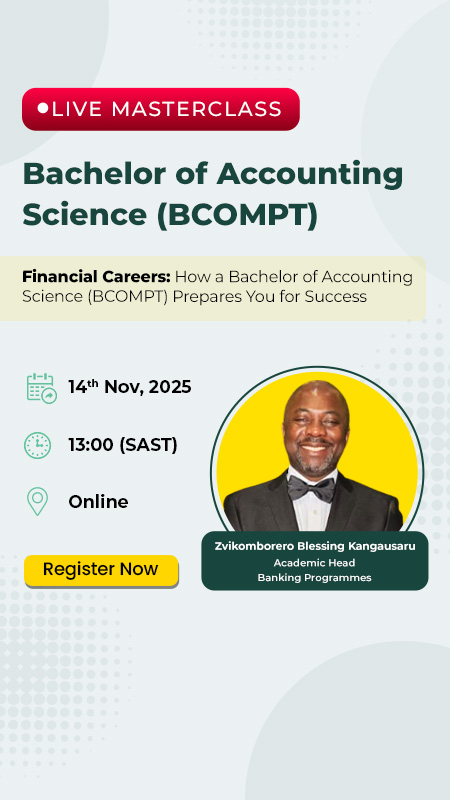The structural frame
The structural frame emphasizes the importance of formal roles and relationships. Structures are created to fit an organisation’s environment and technology. Organisations allocate responsibilities to participants and create rules, policies, and management hierarchies to coordinate diverse activities.
Key principles of the structural frame
- Specialized tasks
- Sequential work
- Close supervision
- Top down Blueprint for pattern of expectations and procedures
- Stable environments are hierarchies and rule oriented
- To achieve goals and objectives rationality prevails over personal and external pressure
- Designed to fit organisation’s circumstances.
- Increase efficiency through specialization & division of labour
- Forms of coordination and control to insure success
- Problems solved through restructuring.
A structural scenario casts managers and leaders in fundamental roles of clarifying goals, attending to the relationship between structure and environment, and developing a structure that is clear to everyone and appropriate to what needs to be done. Without a workable structure, people become unsure about what they are supposed to be doing. The result is confusion, frustration, and conflict. In an effective organisation, individuals are relatively clear about their responsibilities and their contribution to the mission. Policies, linkages, and lines of authority are straightforward and widely accepted. When you have the right structure, one that people understand, and organisations can achieve goals and individuals can see their role in the big picture.
Looking at communication in this structural scenario it is generally accepted that most communication and people problems stem from structural flaws rather than personal limitations or liabilities. This includes the inability of leaders within the organisation to promote and implement a proper communication system within the structure. The communication structure that exists might also not fit the circumstances the organisation finds itself in. At this point, some form of reorganisation is needed to remedy the mismatch. How to structure it, is one of the central issues facing any organisation, and having a proper communication structure within that structure just as essential. A structure should be the outline of the “desired patterns of activities, expectations, and exchanges (communication) among executives, managers, employees, and customers or clients. A typical example of a structural frame of in an organisation is shown in Figure 1 below.
Figure 1: Organisational Structure.
Finance and banking institutions are renowned for the structural approach that they assume. Whilst having an organised and structured flow is imperative, it cannot work if it excludes all the other frames.
The Human Resources frame
Lee Bohlman and Terry Deal have described the reframing of organizations into four frames as Structural, Political, Symbolic and Human Resources. Bohlman and Deal have described the barriers to Change Essential Strategies in Human Resource: Anxiety, uncertainty, feelings of incompetence, neediness Training to develop new skills, participation and involvement, psychological support Bohlman and Deal, 1997: 321
PMI says the definition of Human Resource Management is ” The art and science of directing and coordinating human resources throughout the life of a project by using administrative and behavioural knowledge to achieve predetermined project objectives and scope, cost time, quality and participant satisfaction.”
The human resources frame, based particularly on the ideas of organisational social psychologists, starts with the fundamental premise that organisations are inhabited by individuals who have needs, feelings, and prejudices. They have both skills and limitations. They have a capacity to learn, as well as a sometimes-greater capacity to defend old attitudes and beliefs. From a human resource perspective, the key to effectiveness is to tailor organisations to people – to find an organisational form that enables people to get a job done while feeling good about what they are doing.
Project mangers in Financial IT need to adhere to some new concepts in Human Resource in order to achieve satisfactory results. People are reluctant and resistant to change because they feel secure within their existing structure. IT is a fast changing environment and Financial IT project managers need to pay attention to his/her teams needs at all time. Neglecting any human resource need could jeopardize a project.
Training and Development: Increasing training and development in personal skills. The skills for being successful at project management have changed. They are more focused on developing and leading a team than doing it all yourself. Human Resources in the IT Financial sector have not been given the necessary attention to the definition and the skills requirements within the IT sector. Far too many incompetent people have been placed into positions that are beyond their capabilities. Offer a project manager self-assessment tool that will help individuals to assess their strengths and weaknesses as a project leaders. Periodically these leaders need to assess themselves to see how they’ve improved their skills. Creating an improvement project for one to address one’s weaknesses is also only one of the ways to develop ones own skills.
Team members also have to under training and development to enhance their skills. Workshops and in-house training schedules can be used to empower their employees with skills. Other training methods like outsourcing training to institutions and using proven teaching methods like Caliper.
Communication: Communication can improve relationship within an organization. Communication failure could also be caused by de-motivation within a team. Looking at Participative Management, team members like to be part of the decision making process because they feel like they are part of something special. Team members also need to be active, and not be involved in routing activities, which lead to boredom and causes issues like under performance. That is why project managers should look into matters like, Job Enlargement. Project mangers also need to be skilled in areas like leadership, listening skills and other skills that ensures he has an overall understanding of team members needs and project expectations.
Team members being expected to perform outside of their capabilities could also cause de-motivation, and all work and communication between the team members could become seriously affected, resulting in the failure of the project. The team as a whole may need to go under formal training with an institution using a methodology in ensuring the team members know what’s expected of them. If the team is motivated, the communications channel is used more openly.
“Strong relationships between IT and HR can give a company a competitive edge.” (Enterprise Careers, 1998). With the boom of the Internet resulting in the fast pace world of Internet banking project mangers must pay special attention human resource issues.
Using alternative approaches to project management, can improve the success rate of projects. Although these new models would have to be team-based and participative. In older models of project management, the project manager directed all the project work. He/she created the project plan, sometimes with input from team members, but often without consultation. He/she then handed out assignments to the people on the team, following up with each one to make sure he or she was getting his/her work done on time and within budget. The results of this old approach will not surprise you. The project plan had missing elements because the project manager couldn’t think of everything by himself. Because there had been no participation in the planning process, the team was demoralized, unmotivated, and apathetic. In addition, they did not understand the whole project or how it fit into the business objectives of the organization. And, of course, there was no commitment to getting the work done on time or within budget. The new project management approach is involves the team in the planning, monitoring and control of the project. Participative management it the way to go in a fast paced industry like IT as everyone wants to be recognize as a valuable player. It’s not always possible to use a pure participative approach. You may not be able to get all the team members together (either physically or by video conferencing). However, your results are directly proportional to the degree that you involve the team in the planning and monitoring processes. Participative project management requires more than just being skills in team-based project management tools. You also need to understand and lead the team process. This is the process by which people work together. By using a participative project management method, you’ll lessen the number of team problems you have, but you’re still going to encounter people problems.
Job Enlargement Workers often expect higher payment to compensate for learning these other jobs and for agreeing to changes in working practices. The new jobs are often only a marginal improvement in terms of the degree of repetition, the skill demands and the level of responsibility; as a result workers have not always responded positively to such change. Job enlargement schemes may not be feasible, e.g. in motor vehicle assembly, without a major change in the production facilities. The concepts of both job rotation and enlargement do not have their basis in any psychological theory. However, the next generation of attempts to redesign jobs emerging from the USA developed from the researches of Frederick Herzberg
(https://www.accelteam.com/human_relations/hrels_05_herzberg.html.)
During the 1950’s and 1960’s Herzberg developed his ‘two factor’ theory of motivation. Job Enrichment in his theory separated ‘motivators’ from ‘hygiene’ factors. The hygiene factors included salary, company policies and administration as well as supervision. They were seen as potential sources of dissatisfaction but not of positive motivation. Another set of factors including achievement; recognition, responsibility, advancement, growth and the work itself were postulated as the ‘real’ motivators. From this theory Herzberg developed a set of principles for the enrichment of jobs as follows:
- removing some controls while retaining accountability;
- increasing personal accountability for work;
- assigning each worker a complete unit of work with a clear start and end point;
- granting additional authority and freedom to workers;
- making periodic reports directly available to workers rather than to supervisors only;
- the introduction of new and more difficult tasks into the job;
- encouraging the development of expertise by assigning individuals to specialized tasks.
Job enrichment and job enlargement can be welcomed if other specific personal needs of the team members are met. Project managers would cause a project to fail if team members are expected to do work outside their skills matrix. Increasing training and development in personal skills are becoming more common. The skills for being successful at project management have changed. They are more focused on developing and leading a team than doing it all yourself. All of the above-mentioned aspects contribute to the success of projects. In summary, the following factors are proven key success indicators on projects:
- User involvement
- Management support
- Skilled, experienced project managers
- Clear requirements statement
- Comprehensive work plan
- Sound development methodology
- Prototyping
- Extensive Testing
The Political Frame
The political frame, invented and developed primarily by political scientists, views organisations as arenas in which different interest groups compete for power and scarce resources. Conflict is everywhere because of the differences in needs, perspectives and lifestyles among various individuals and groups. Bargaining, negotiation, coercion, and compromise are all part of everyday organisational life. Coalitions form around specific interests and change as issues come and go. Problems arise because power is concentrated in the wrong places or because it is so broadly dispersed that nothing gets done. Solutions are developed through political skill and acumen – as Machiavelli suggested they should be centuries ago in The Prince. In this definition it is clear that:
- Organisations are viewed as coalitions composed of varied individuals and interest groups
- There are enduring differences among individuals and groups
- Allocation of scarce resources is central
- Conflict is central to organisational dynamics and power is the most important resource
- Organisational goals and decisions emerge from bargaining, negotiation, and jockeying for position among members of different coalitions.
The propositions of the political frame do not attribute politics to individual selfishness, myopia, or incompetence. They assert that interdependence, difference, scarcity and power relations will inevitably produce political forces, regardless of the players. It is naive and romantic to hope that politics can be eliminated in o rganisations. Managers can, however, learn to understand and manage political processes.
There is no guarantee that those who gain power will use it wisely or justly. But is it not inevitable that power and politics are always demeaning and destructive. Constructive politics is a possibility, and a necessary possibility if we are to create institutions and societies that are both just and efficient. Given the current climate, which is characterized by rapid and continuous change in a time of scarce resources, the political frame may have increasing importance.
- METHODOLOGY
This study utilised Grounded Theory as this a methodology the author used to simply the discovery of emerging patterns in theoretical models around Reframing organisations. Grounded Theory is the generation of theories from data, in this study; it is concerned with the South African context. (Glaser in Walsh, Holton et al 2015).
Grounded theory was applied in this study as it is research tool which enabled the author to seek out and conceptualise the Reframing emerging strategic patterns and structures of the relevant and emerging strategic constructs. This methodology was used in developing theory which is more aligned to the emerging industry trends. This was used by the author as the deductive phase of the grounded theory process (Glaser in Walsh, Holton et al 2015)
- RESULTS AND DISCUSSION
In answering the question: Does the reframing organisation theory make a contribution to successful projects? we will conclude by saying yes it does. Reframing organisations theory emphases the need for multiframing and integrating all the four frames namely political, HR, structural and symbolic. Whilst businesses may have previously been managed using a structural or political frame, the multiframing technique has advocated that the HR frames and symbolic frames cannot be ignored if one is to successfully manage a business and its people. The impact of excluding the HR frame has been proven to be ”fatal”. Whether there is great hardware available for the project and a well laid-out physical environment, if the team members are not included in the decision-making and if the correct communication plan is not practiced, the success of that project is doomed. Reframing organisation theory encourages team-based and participative project management. This new way of communication comes with a lot of responsibility for project managers, however it also allows for a higher rate of project success. In implementing all frames, project managers can get overwhelmed but the following questions can be used as a guideline to manage a project successfully while using reframing organisations theory:
- Does the structure fit the scope of the project or organization?
- Is your communication plan in place before starting your strategic planning?
- Does the communication method suit the structure?
- Are leaders within the structure capable of implementing and maintaining the communication structure?
- Does the plan include timely and regular communication?
- Is communication of lesser individuals within the structure filtered properly, or will it get lost in the hierarchy, and is it given the proper consideration?
- Does communication include all relevant participants?
- Does the structure allow for easily accessible communication methods?
- And lastly what effect will the structure of communication have on the other 3 frames (Symbolic, human resources and political frames) and does it take these into consideration.
Lastly, it is imperative that all the frames are taken into consideration when undertaking a project and a thorough yet practical communication plan should be in place. Each frame can work well when implemented individually, however this is being short-sited. Using one or two frames limits the leader’s ability to act as effectively as possible. Bohlman suggests that leaders need to use all four frames. Leaders must develop the ability to `reframe’ situations in order to make sense of what is happening and to create alternative solutions and strategies. The most effective leaders integrate the frames into their thought patterns and behaviour
REFERENCES
Bohlman, L & T Deal (1991): Reframing Organisations: Artistry, Choice and Leadership. San Francisco: Jossey Bass.
Collins, J C & J I Porras (1995): Built to Last, Successful Habits of Visionary Companies. Century: London.
Enterprise Careers. (1998): May 04. vol. 20, iss. 18, pg: 98.
Knights, D & H Willmott (2000): The Re-engineering Revolution, Critical Studies of Corporate Change. Sage: London.
Laxton, D M (2000): Management Theory and Practice. (www.ibi.co.za/dmlsystems)
Robbins, S (1998): Organisational Behaviour, 8th Edition. Prentice Hall: U.S.A
Internet References
www.nwlink.com (www.nwlink.com/~donclark/leader/framwork.html)
www.tnellen.com/ted/tc/bolman.html
https://www.accelteam.com/human_relations/hrels_05_herzberg.html









